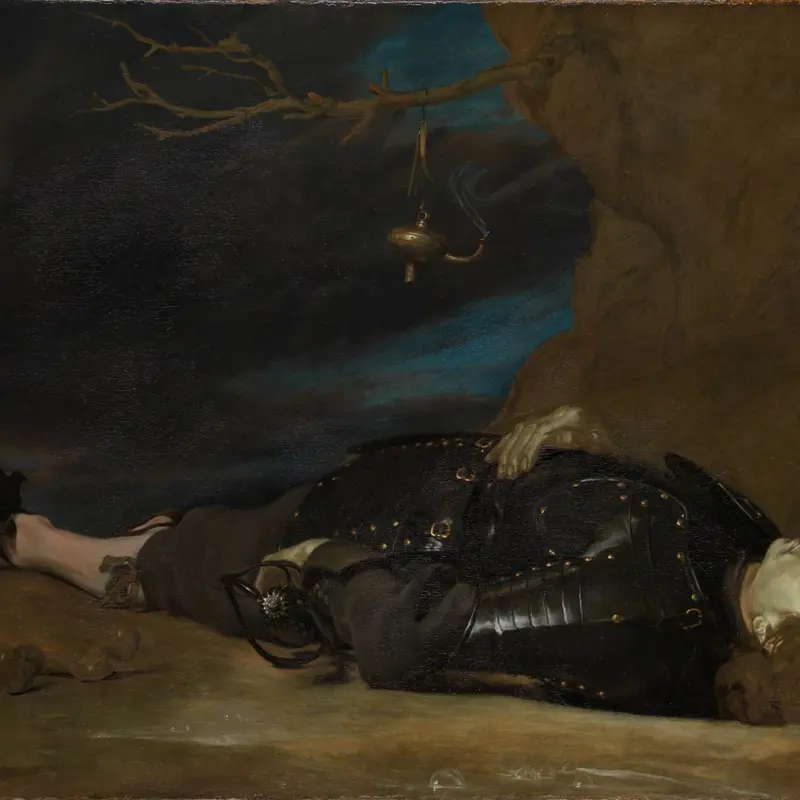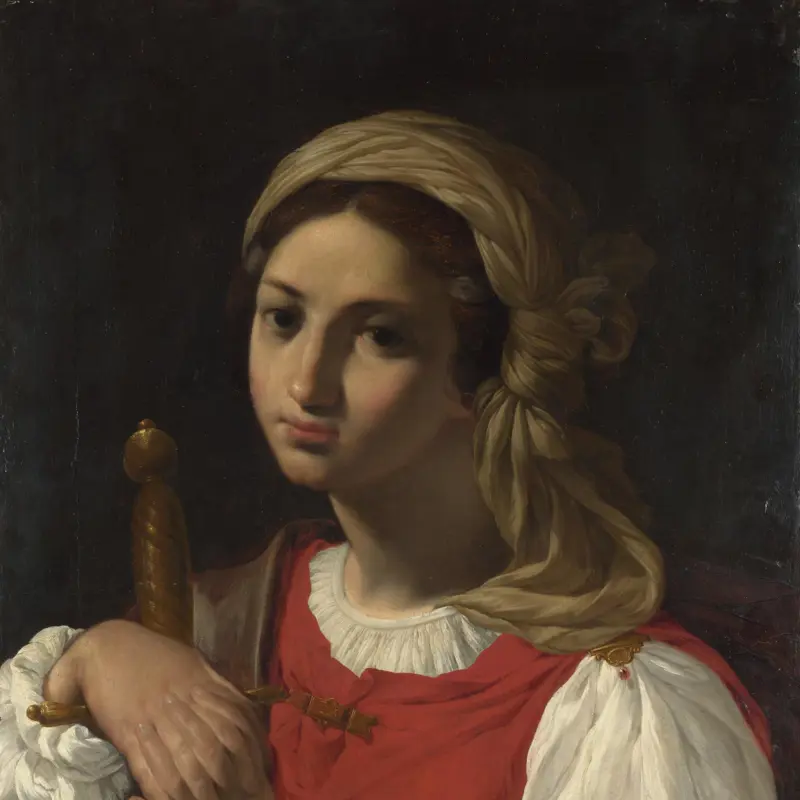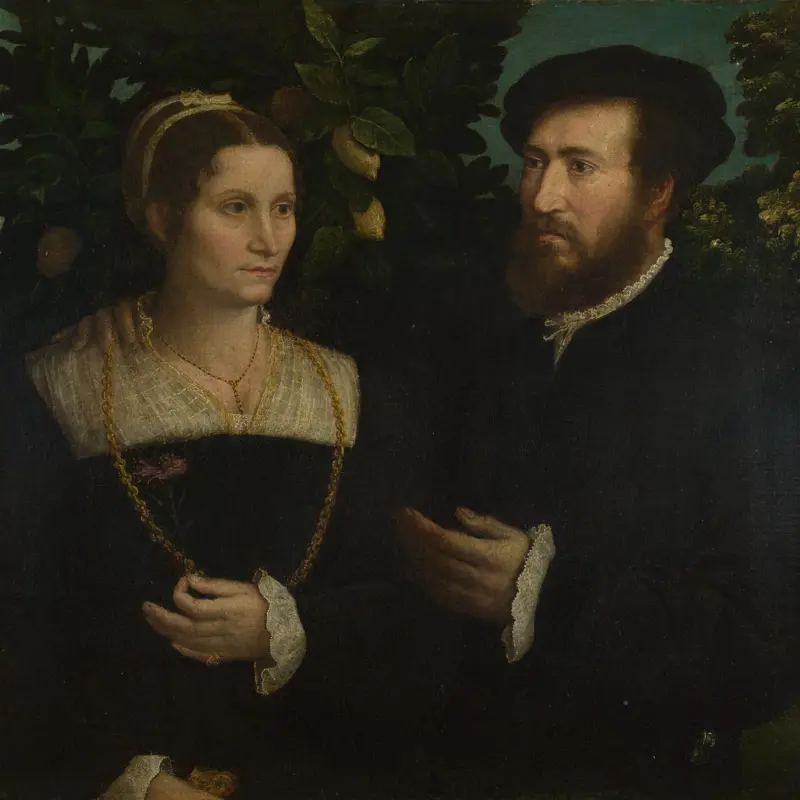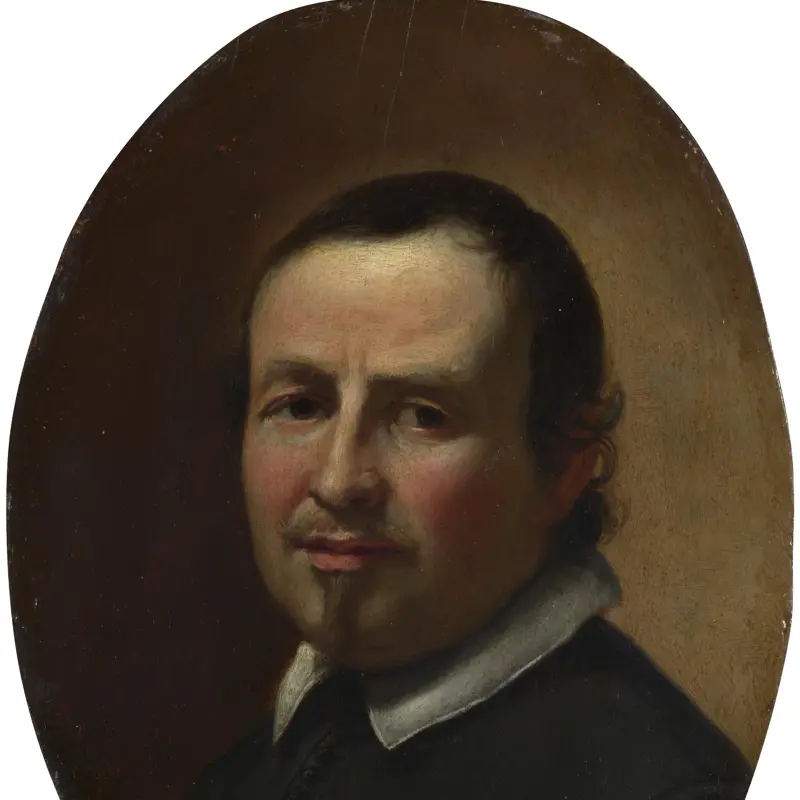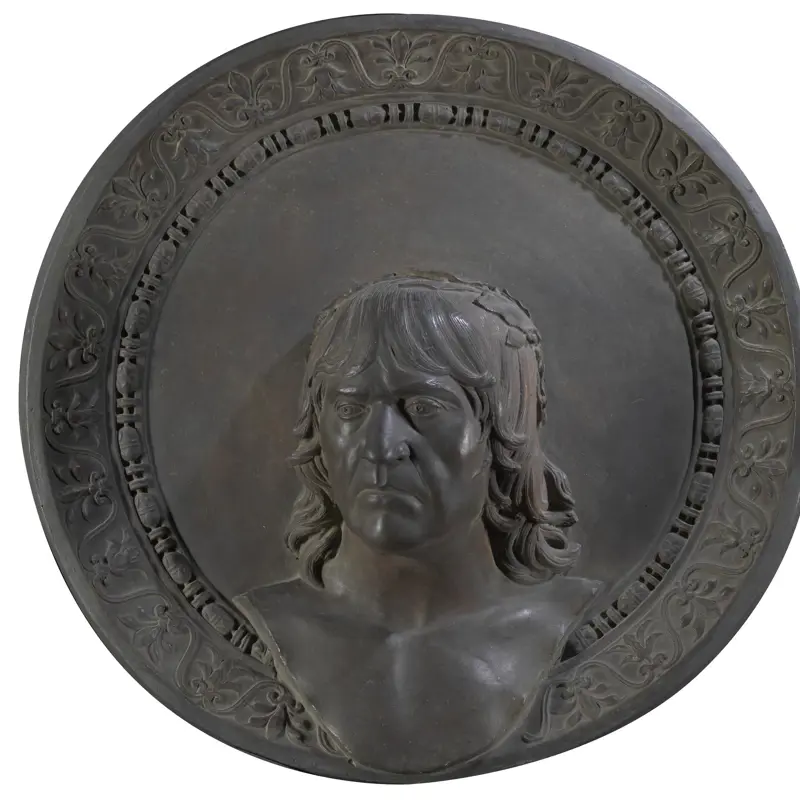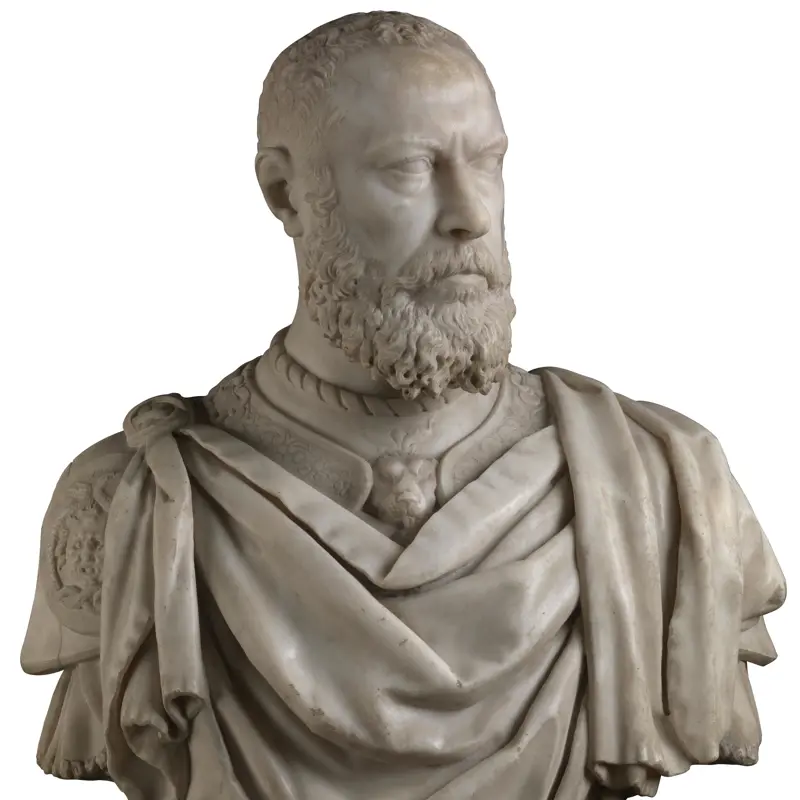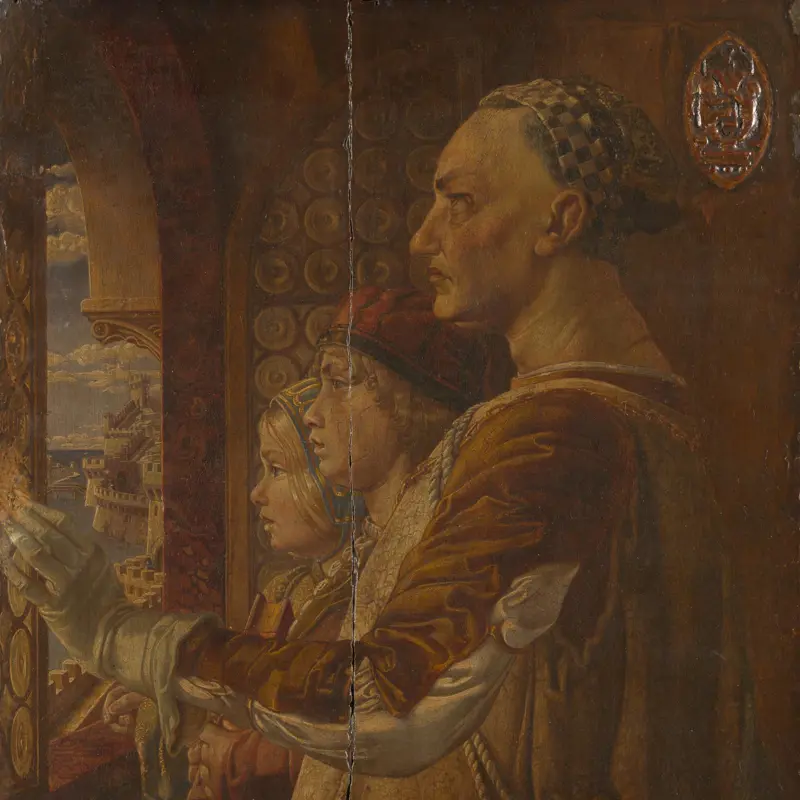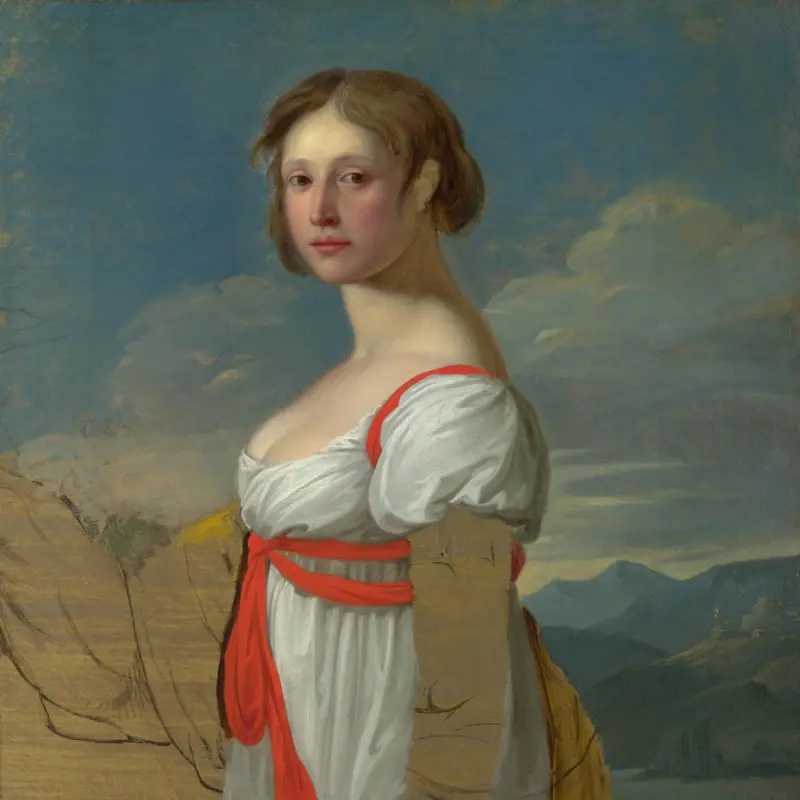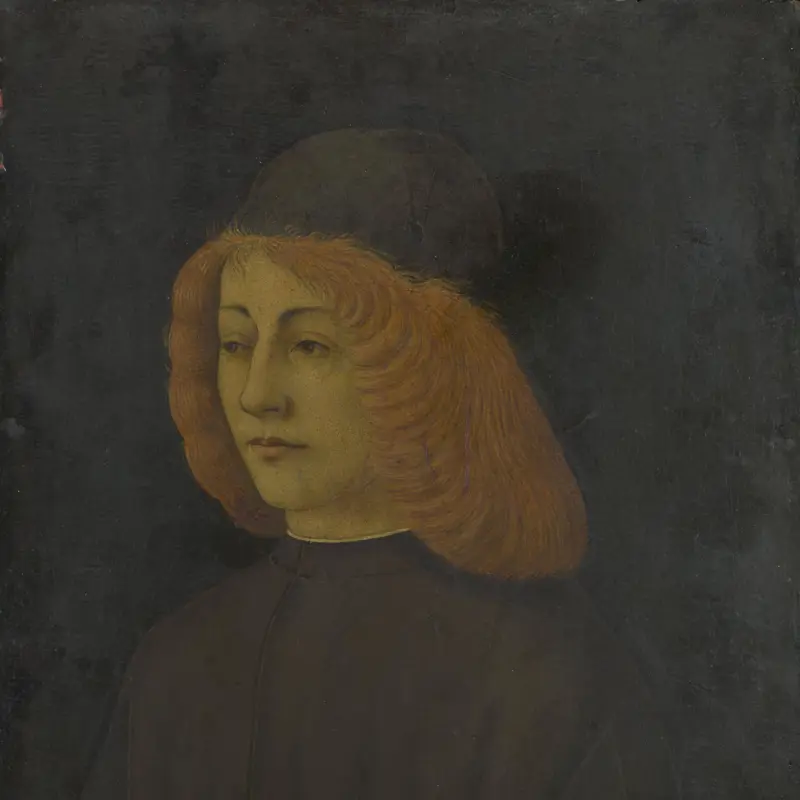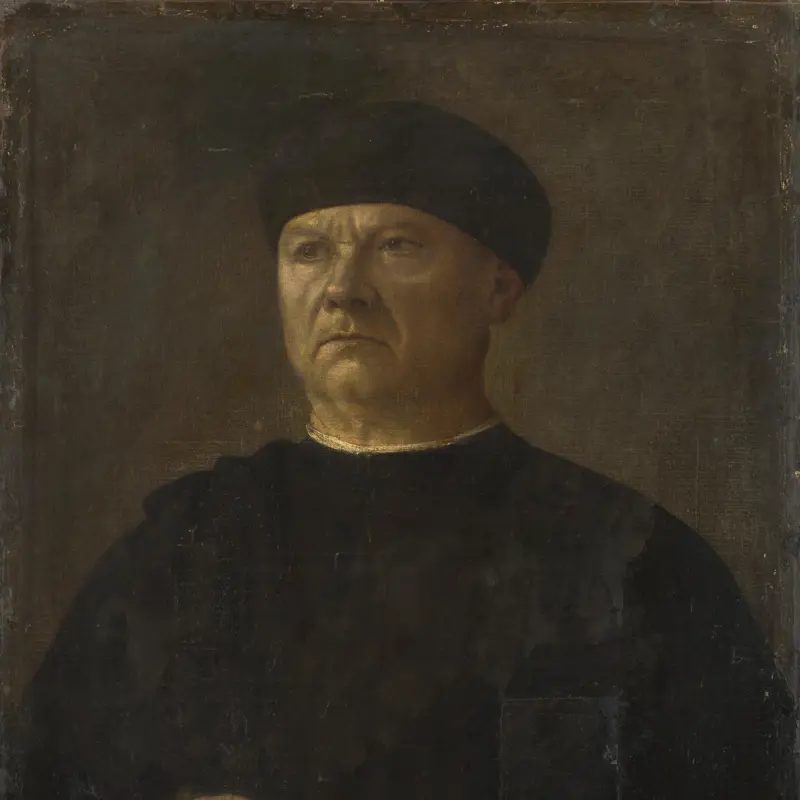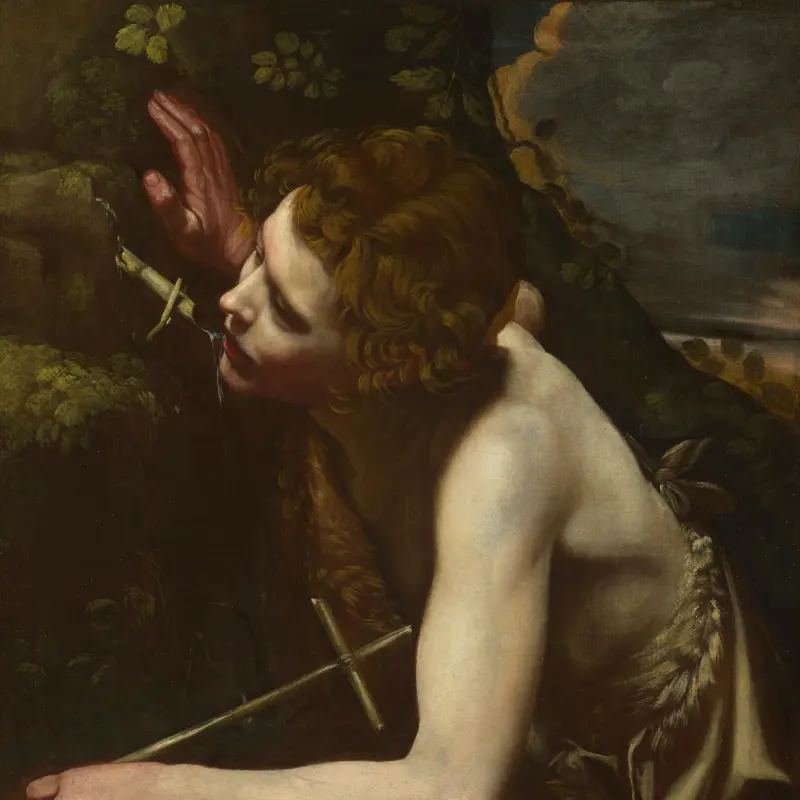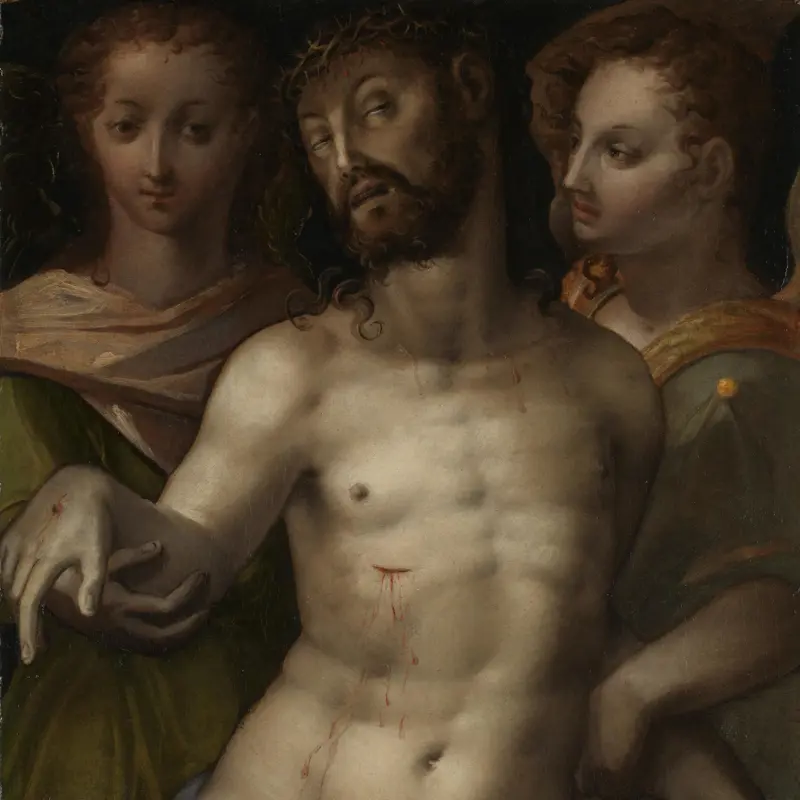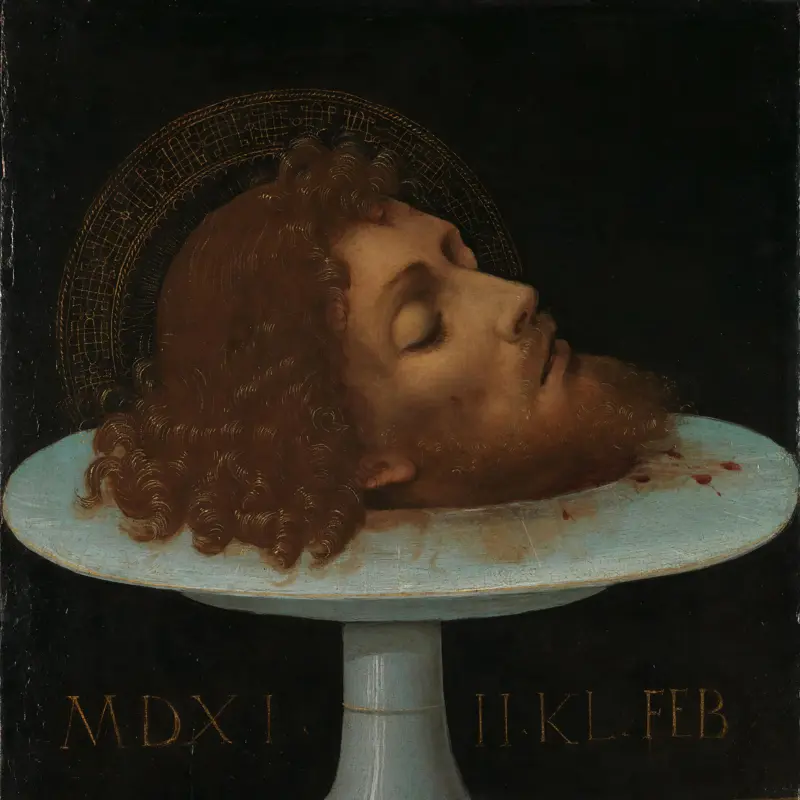Italian, 'Portrait of a Young Man', about 1518
About the work
Overview
This elegant young man is dressed in an expensive black coat lined with lynx fur and a fine linen shirt embroidered in white around the neckline with delicate scrolling patterns. It is not possible to make out the emblem on his signet ring, which might have given us a clue to his identity. The costume has been dated to about 1518.
He holds what appears to be a black and gold silk tassel made up of three balls, which may actually be a rosary to count out his prayers. Although the painting is damaged in places, we can still appreciate its high quality. The lynx fur is suggested by very fine directional brushstrokes which capture the varying textures and characteristics of the fur in different parts of the pelt.
We do not know for certain who painted this portrait. In the past it has been attributed unconvincingly to Raphael, an unknown Milanese artist and Bartolomeo Veneto.
Key facts
Details
- Full title
- Portrait of a Young Man
- Artist
- Italian
- Date made
- About 1518
- Medium and support
- Oil on wood (probably walnut)
- Dimensions
- 64.5 × 49.2 cm
- Acquisition credit
- Bequeathed by Miss Sarah Solly, 1879
- Inventory number
- NG1052
- Location
- Not on display
- Collection
- Main Collection
- Previous owners
Provenance
Additional information
Text extracted from the ‘Provenance’ section of the catalogue entry in Cecil Gould, ‘National Gallery Catalogues: The Sixteenth Century Italian Schools’, London 1987; for further information, see the full catalogue entry.
Bibliography
-
1962Gould, Cecil, National Gallery Catalogues: The Sixteenth Century Italian Schools (excluding the Venetian), London 1962
-
1987Gould, Cecil, National Gallery Catalogues: The Sixteenth Century Italian Schools, London 1987
-
2001
C. Baker and T. Henry, The National Gallery: Complete Illustrated Catalogue, London 2001
About this record
If you know more about this work or have spotted an error, please contact us. Please note that exhibition histories are listed from 2009 onwards. Bibliographies may not be complete; more comprehensive information is available in the National Gallery Library.

